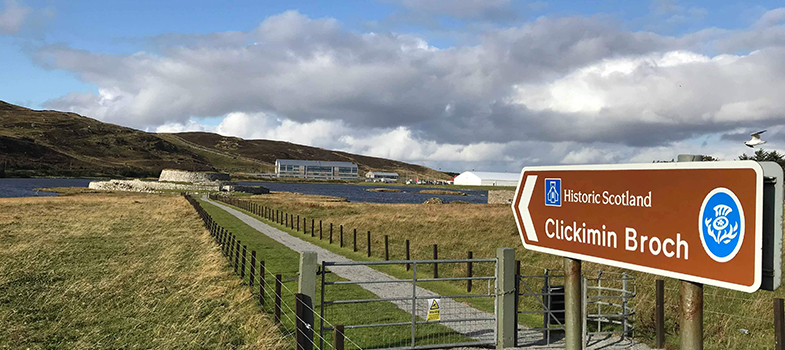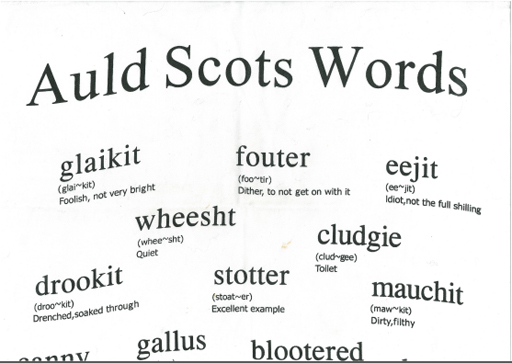The creation of Scottish Standard English (SSE)
Let’s now look at how Standard English was used as a model to actively change spoken Scots into Scottish Standard English. Sometimes the reversal of this process gives a useful insight into exploring Scots and seeing how a standard written Scots might be achieved.
There is a reasonably simple algorithm to deploy, to alter one's Scots to be suitably understood as English with a Scots accent. This is often the process Scots speakers go through at school whilst learning to become literate in English. Here we consider whether these rules could be applied in the same way when developing a standard of Scots.
The basis are the cognate words, the words which sound closest between Scots and English. These are used to provide the map of which sound in Scots matches with which sounds in English. These appear in words like: bed, shoot, can.
To this day, people may think of these cognates as English words, where they are indeed both English and Scots. Some Scots sounds map to more than one Standard English sound, such as the vowel in both ‘ant’ and ‘aunt’ being the same in Scots accents whilst there are two different vowel sounds in standard English. Where Scots makes a distinction, for example between the vowels in ‘bride’ and ‘died’, this is disregarded.
Words which are cognate to English words but with phonological differences are changed in SSE to be phonologically consistent in their sound mappings. So heid becomes ‘head’, using the same vowel sound as in ‘bed’; pit becomes ‘put’, using the same vowel sound as in ‘shoot’; haun becomes ‘hand’, using the same vowel sound as in ‘can’, and with the addition of the 'd'.
Each of these two categories of words above make up roughly half of the one thousand most common English language words.
- All of these words must only represent the Standard English meanings. Words like 'away' do not, for example, mean to go in SSE. Whilst 'that's me awa' means I am leaving, 'that's me away' does not.
- All Standard English words will become part of Scots Standard English. For example, 'little' replaces 'wee' or 'smaa'; or 'why' replaces 'hou', 'whit wey' or 'whit fir'. This group of words are those which can prove highly contentious when conceptualising a standard Scots, ought we to eject these English loan words from a Standard Scots vocabulary?
All Scots words which have no English cognates are prohibited. This later group of words, the kind one finds on tea-towels, can be what many people conceptualise as Scots, for example as shown in the image of the author’s dishcloth in Unit 2:
- All new words invented or adopted will follow the rules of Standard English. In conceptualising a Standard Scots ought we to reject neologisms such as 'vacuum cleaner' and come up with unique Scots neologisms such as 'stoor sooker'?
- All grammar will conform to Standard English grammar. For example this sentence would be considered correct: ‘Can't you tell the difference?’, as opposed to: ‘Can you not tell the difference?’ – as the second form uses the Scots grammar in sentence formation – 'Cin ye no tell the difference?'
- And as Standard Scottish English follows the conventions of Standard English, written Scottish versions of cognates shall follow Standard English conventions, for example: ‘aunty’ would be the correct form as opposed to auntie.
20.3 Scots Standard English - A standard written language

